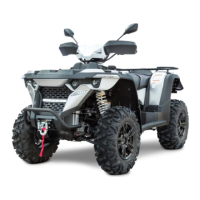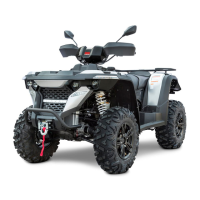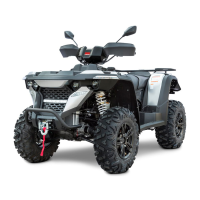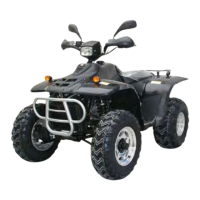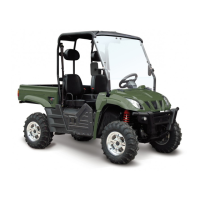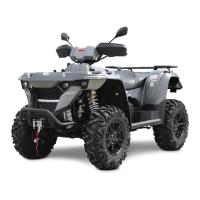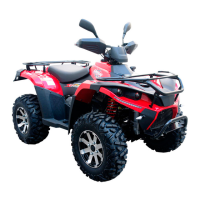INSPECTION
Adjusting brake pedal
1. First check foot brake effectiveness by
applying a 25 kg (50 lb). (Approx)
downward force on the pedal.
The top of the pedal should be at least 1
inch, (25 .4m m) above the surface of the
footrest.
The following checks are recommended to
keep the braking system in good operating
condition. Service life of braking system
components depends on operating conditions.
Inspect brakes in accordance with the
maintenance schedule and before each ride.
⚫Keep fluid level in the master cylinder
reservoir to the indicated level on reservoir.
⚫Use DOT 3 brake fluid.
NOTE: Use new brake fluid or brake fluid
from a sealed container to avoid
contamination to system.
⚫Check brake system for fluid leaks.
⚫Check brake for excessive travel or spongy
feel.
⚫Check friction pads for wear, damage and
looseness.
⚫Check surface condition of the disc.
BRAKE PAD INSPECTION
⚫Pads should be changed when friction
material is worn to 3/64" (1mm).
HOSE/FITTING INSPECTION
Check braking system hoses and fittings for
cracks, deterioration, abrasion, and leaks.
Tighten any loose fittings and replace any
worn or damaged parts.
FOOT BRAKE ADJUSTMENT
NOTE
On European ATV foot brake is the SERVICE
brake (MAIN brake)
Use the following procedure to inspect the
hydraulic foot brake system and adjust or
bleed if necessary.
If the push rod joint is reinstalled, adjust the
push rod length so that the distance between
the centers of the master cylinder lower
mounting bolt hole and joint pin hole is
80±1mm.After adjustment, tighten the joint
nut.

